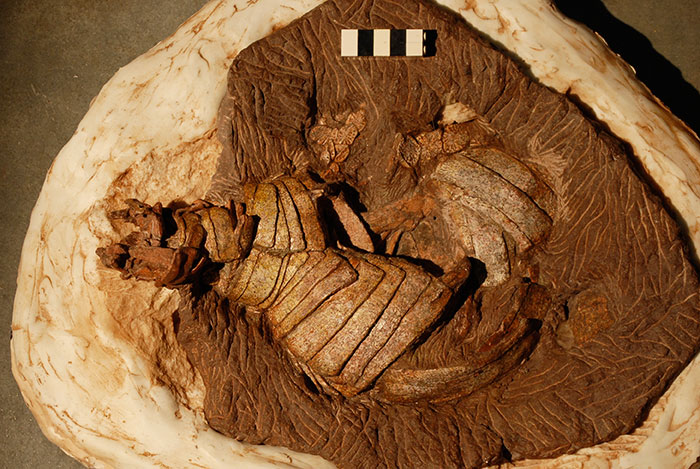Standing on the corner of Chambers Street and George IVth Bridge, the iconic National Museum of Scotland building has an imposing façade. But for most visitors the yellowy sandstone warrants nothing more than a quick glance prior to exploring the treasures inside.

However, for the palaeontologist it might get a closer inspection: for this is not just any sandstone, it is Clashach Sandstone from Morayshire. Hewn from the Clashach Quarry, these sandstones are known for ancient trackways made by terrestrial vertebrates over 250 million years ago. In fact these rocks are part of a suite of sandstones, sometimes referred to as the Elgin Sandstones, dating back to the Permian and Triassic periods, approximately 265 – 230 million years old.
For me it is the youngest rocks of this series of sandstones that are the most interesting: they include tantalizing traces of a variety of reptiles which apparently inhabited a rather inhospitable environment of sand dunes at a time when the first mammals and dinosaurs roamed the Earth. During the Triassic, the map of the world was very different to its current configuration, with all the continents joined together to form the supercontinent Pangaea.
One of the ancient groups of reptile sharing this world with early dinosaurs is the Aetosauria, heavily armoured plant-eaters that bore a passing resemblance to armadillos or pangolins on steroids. The first of these to be described was Stagonolepis robertsoni in 1844 from the Lossiemouth East Quarry just a few miles away from the Clashach Quarry. The isolated bony plates were originally thought by the famous Swiss natural historian Louis Agassiz to represent the scales of a very large fish, and it wasn’t until 15 years later that they were correctly identified as reptilian bones by Thomas Henry Huxley. Since then a number of these armoured reptiles have been described from every modern continent apart from Australia and Antarctica and they range in size from about 1 to 6 metres long.

For the past 30 years, in my efforts to bring about the reunification of Pangaea, I have been describing fossils from around the globe, together with many friends and colleagues. The most recent of these is a new species of aetosaur from North Carolina, Coahomasuchus chathamensis, adding to the growing diversity of this distinctive group that was first described from Scotland.

I hope that in future you will view the façade of the National Museum of Scotland in a somewhat different light and can be transported back in time when Scotland was part of a very different world.
